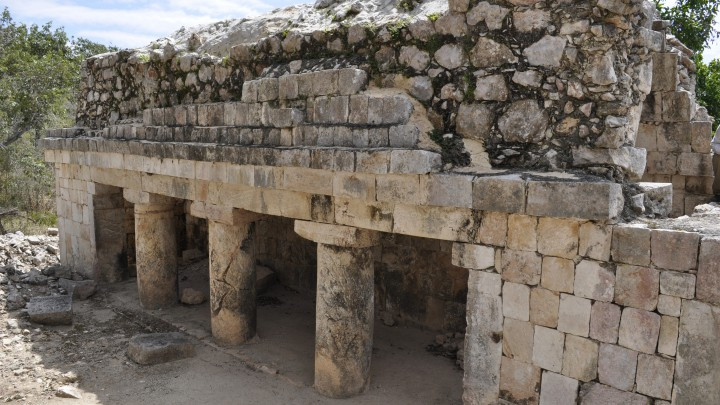The remains of this Mayan city cover an area of approximately four square miles and provide good examples of Puuc-style architecture, with well-carved and jointed blocks of limestone. Some buildings were decorated with smooth cylinders, fret patterns or panels with personages and hieroglyphs.
The site was occupied principally between 600 and 900 AD, with the eighth century seeing a peak in building activity, while texts engraved on stone monuments were especially frequent between the years 728 and 761. Fourteen names of individuals have been deciphered, but none of them was of the highest rank. They have been identified as sahals, literate individuals, priests, members of important families and figures of authority, but subordinate to an Ahau, or regional leader.
No ballcourts or large pyramidal plinths have been found at Xcalumkin. Nevertheless the quantity of labor invested in its constructions is a sign that the settlement controlled its surrounding area, which must have provided ample harvests of corn, beans and cotton as well as other crops and significant quantities of honey and wax. This made possible the acquisition of salt, dried fish, shells, snails and wood dyes from the coastal region (some 30 miles away), as well as cinnabar, jadeite, basalt and obsidian from more distant regions.







